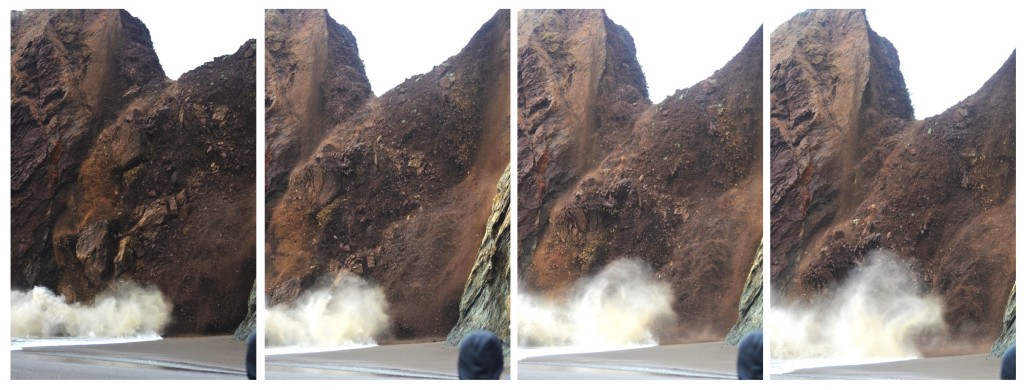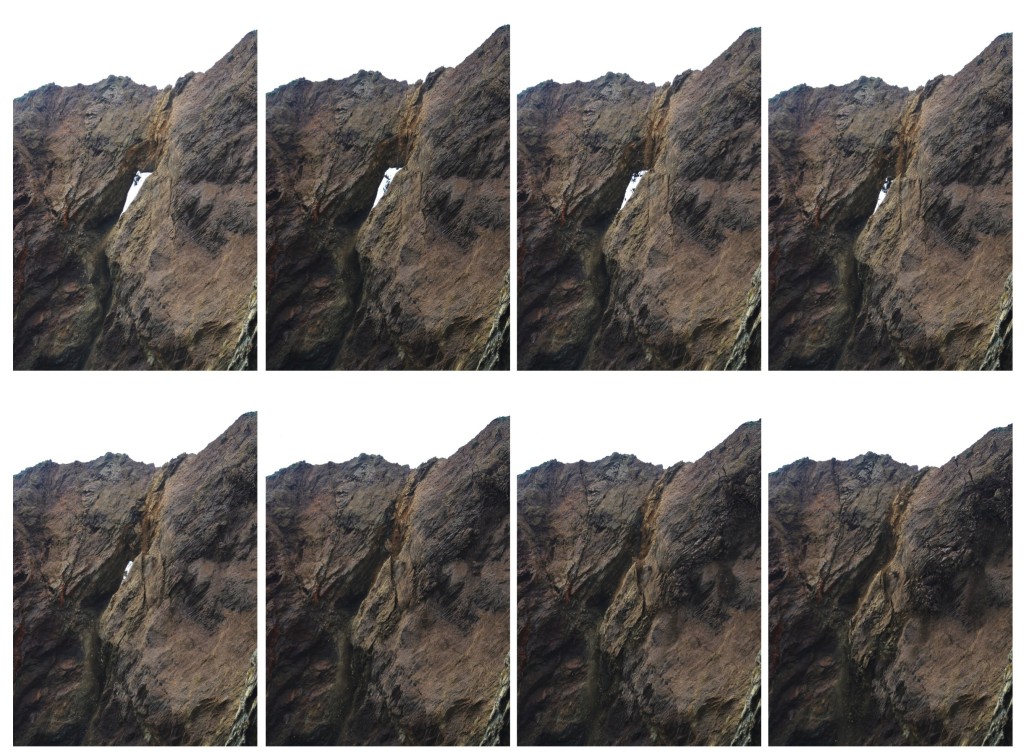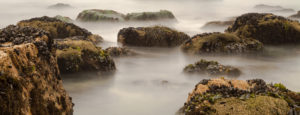As luck would have it, the sudden collapse of the iconic rock archway at Tennessee Beach in Marin on Dec. 29 was experienced by two earth scientists.
Robert Wills, an environmental science graduate student at Caltech, was out snapping pictures of the iconic rock archway at Tennessee Beach when the whole thing came tumbling to the ground. He was with his father, Chris, an engineering geologist with the California Geological Survey, who told the Marin Independent Journal that it was likely that weaker rock had fallen away from the cliff over the years creating the hole and arch. Decades of pounding surf and water intrusion finally made the arch give way.
Robert Wills wrote about the event on his blog and we’re sharing the story with you:
————————————————————————————————————————————–
By Robert Wills
On December 29th, 2012, I witnessed a spectacular event. I was on a short hike with my family to Tennessee Beach, just north of the Golden Gate Bridge in San Francisco. We had come to see the large waves forecasted for the day associated with a passing storm and strong winds off the coast. The waves were indeed spectacular with 10-foot swells breaking directly onto the sand and even larger waves visible all the way to the horizon, breaking on a shoal offshore. But we were in for a far grander spectacle.
The beach was dominated by a large arch carved into the cliffside standing about 100 feet off the ground. As we were admiring the waves, a crack and the ensuing sound of a waterfall of rocks caught our attention and everyone on the beach spun to see a small stream of rock flowing down the cliff face below the arch. This was exciting enough that we kept our cameras out and ready and our attention on the arch.
I was hoping to get another such small rockslide because I liked how it looked in a picture, a brown waterfall emanating from a hole in the wall. I could never have expected what happened next. Two minutes later, just as I was hoping, a few chunks of rock fell from the underside of the arch and I started my camera. Then the arch started to buckle in on itself and squeeze out rock from beneath it.
With this, the collapse of the arch shortly followed and the entire surrounding hillside started to slip off into the ocean in a thundering roar as boulders the size of a piano crashed into the surf and the sand sending up a large splash of debris that got me a little nervous despite my 100-meter distance.
It all lasted less than 10 seconds and left the beach quiet in comparison, the roar of the surf nothing compared to the thunder of the rockslide. The small crowd of 15 or 20 people stood in awe, wondering if the show was over. The main event was over, with only one smaller rockfall in the next 20 minutes, but the scene was still fascinating, with waves washing over the fresh pile of rock turning the ocean brown.
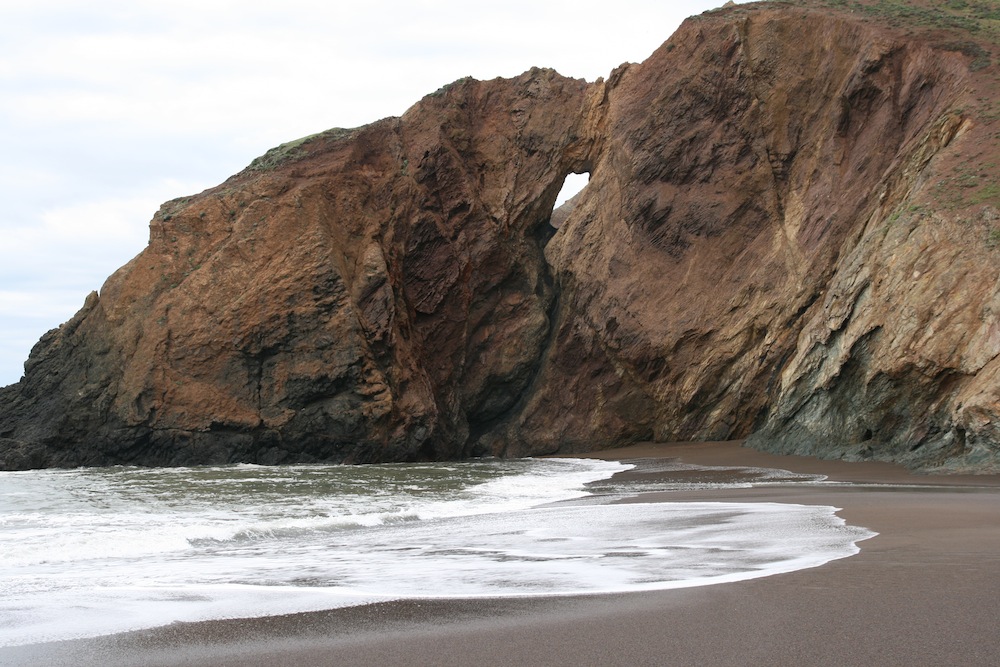
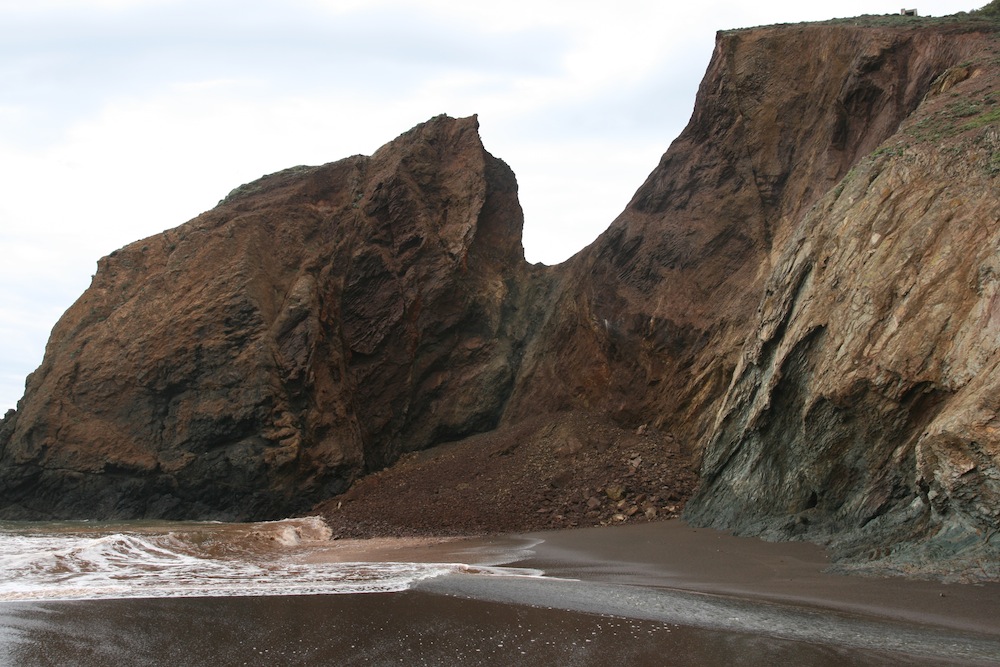

The sequence of photos from the main collapse provide a rare glimpse into the mechanics of this powerfully erosive force of nature. Because these events are completely unpredictable, there are few examples of such images (some of the best available landslide videos can be found on the Landslide Blog). In addition to my own sequence of images from the collapse, shown at the top, my dad got a nice sequence of images, shown below. My dad has spent a large portion of his career mapping landslides but had never seen a rock slope collapse so quickly.
What is fascinating about these images is they show somewhat clearly how once the keystone, the rock in the center of the arch, is gone, the arch can no longer hold its own weight and collapses in on itself. Often, ocean shoreline is carved into steep cliffs such as the ones at Tennessee Beach because waves erode into the base of the rock leaving a steep or overhanging cliff that is then prone to collapse. The crashing of the waves at the base of these cliffs and the erosion of the cliffs by water and cracking induced by hot/cold cycling are both important.
In this case, the presence of large waves during the event suggest that a piece of rock, important to the structure of the arch, could have been undercut that day, but this is not necessarily the case. While I was at the beach, I saw no rockfalls that originated within 20 feet of the breaking waves. The fall could have simply been associated with the rainy weather of the past several days that finally wore through a fragile arch.
While rockfalls like this are not often seen, the presence of vertical cliffs near the ocean tell us that they are happening all the time. At most beaches you can even see sections of the cliff that look like fresh scars. So next time you are at the beach, look around and see how the cliffs have gradually fallen into the sea and don’t always trust that that cliff is going to stay there forever.
